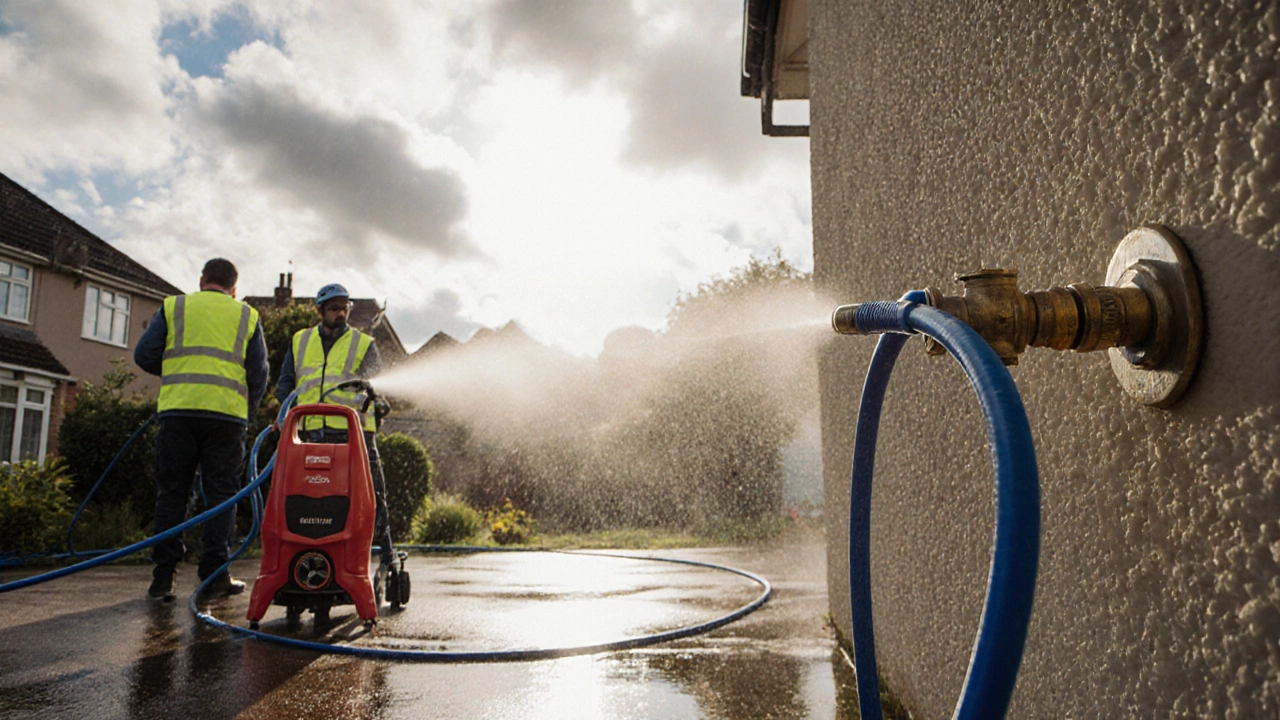Water Source Pressure Washing: Everything You Need to Know
When working with water source pressure washing, the process of using a high‑pressure water stream to remove grime from exterior surfaces. Also known as pressure cleaning, it relies on a steady water supply and the right equipment to be effective. Pressure washer, a machine that boosts water pressure through a pump and nozzle is the core tool, and its performance is measured in PSI, pounds per square inch, which indicates the force behind the water jet. Before you fire up the machine, surface preparation, checking for loose paint, sealing joints, and clearing obstacles ensures you don’t damage the material you’re cleaning. These three entities—water source pressure washing, pressure washer, and PSI—form the backbone of any successful cleaning job, and each influences the others: the right PSI delivers the power, the pressure washer generates it, and a proper water source feeds it.
Why the Right Water Source and Equipment Matter
Choosing a reliable water source is more than just plugging into a tap. A consistent flow rate prevents the pump from overheating and keeps the PSI stable, which means the cleaning result stays even across the whole surface. Most homeowners use city water, but if you have low pressure, a booster pump can bridge the gap. The pressure washer itself comes in electric and gas models; electric units are quieter and greener, while gas‑powered machines deliver higher PSI for stubborn stains on concrete driveways. Pump type matters too: axial‑flow pumps excel at high‑volume jobs, whereas triplex plunger pumps give you the highest PSI for deep cleaning. Knowing the relationship between pump type and PSI helps you pick a machine that matches your water source capacity. For example, a 3,000 PSI gas washer paired with a low‑flow garden hose will never reach its peak, wasting fuel and time. Likewise, using a 1,500 PSI electric unit on a high‑pressure municipal line can be overkill and may cause surface erosion. Balancing these factors—water source flow, pump type, and PSI—keeps the job efficient and protects your property.
Now that you understand the key pieces, the articles below walk you through every step of a pressure‑washing project. From a detailed pre‑wash checklist and safety gear recommendations to how to calculate the exact PSI for driveways, concrete, and delicate siding, you’ll find practical, bite‑size guides for every situation. Whether you’re a DIY homeowner or a professional cleaner, the collection equips you with the knowledge to choose the right equipment, set the correct pressure, and prepare surfaces so you get a spotless finish without costly mistakes. Dive into the posts to see the tools, tips, and step‑by‑step methods that make water source pressure washing both safe and effective.

Do Pressure Washers Use Public Water? Facts About Water Sources and Conservation
Learn where pressure washers get their water, UK regulations, eco‑friendly alternatives, and how to ensure contractors use sustainable water sources.
Read More